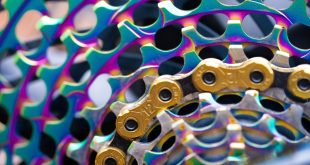Not all helmets are equal when it comes to safety and ventilation claims Heat transfer variations of bicycle helmets, a paper published in the latest edition of the Journal of Sports Sciences, a publication from the British Association of Sport and Exercise Sciences.
The paper was authored by helmet heat dissipation experts from around the world, including Paul Bruhwiler of Empa, a materials science and technology research institute based in St. Gallen, Switzerland.
The paper concludes that “the coupling of ventilation development work to studies of impact properties forms a desirable longer-term goal, so that improvements in ventilation do not come at the expense of the level of impact protection.”
In other words, as helmets get lighter and more consumer friendly they get more comfortable to wear but, in the process, helmet manufacturers could be throwing out the baby with the bath-water.
To test the ventilation efficiency of 24 bicycle helmets – none of which are mentioned by brand-name in the paper – they were stapped to a thermal headform mounted in a climate-regulated wind tunnel.
“The influence of design details such as channel length and vent placement was studied, as well as the impact of hair. Differences in heat transfer among the helmets of up to 30 per cent were observed,” said the paper.
Incredibly, it was demonstrated there was “a negative role of some vents for forced convection,” showing that some helmet manufacturers add vents without studying whether they increase ventilation. Helmet holes are not enough, they have to be correctly-designed holes, said the experts.
And there’s bad news for long-haired hippies. Adding hair to the headform “reduces the heat transfer by approximately a factor of 8 in the scalp region and up to one-third for the rest of the head for a selection of the best ventilated helmets.”
Want to go faster on a bike? Shave off your locks.
The paper reports that its wind-tunnel tests and water-flow experiments show “there is significant optimization potential within the basic helmet structure represented in modern bicycle helmets.”
But only a precious few helmet manufacturers use similar testing methods so many ventilation claims are unfounded.
“The physiological aspects of bicycle helmets are of increased interest,” said Bruhwiler et al.
“Many manufacturers have therefore prioritized wearing comfort, with some of the most advanced designs touting optimized ventilation, including maximum heat transfer. Some manufacturers have carried out wind tunnel studies and presumably subject studies as well. Nevertheless, given the large variation in designs on the market, there is no widely adopted systematic approach to designing bicycle helmets for optimal ventilation.
“A quantitative survey of a large number of modern helmets is required to understand the role of "common sense" parameters, such as the number of holes in the helmet, since the helmet geometries are complex.”
Some of the better performing helmets in the wind-tunnel tests were compromised when pads were added, the usual method of making helmets comfortable to wear. Removing the pads resulted in “a dramatic improvement of the cooling power, confirming this fundamental principle for a state-of-the-art helmet, and showing that the designed configuration was not optimized.”
The study also found there was a ‘sweet spot’ in helmet design which showed that air forced out of the back of the helmet can cool the base of the scalp, “this establishes that the rear of the helmet can be important for overall ventilation performance.”
The paper concludes that “intuitively important factors such as vent cross-section or exposed scalp surface are often limited in their impact by other parameters…The wide variation in ventilation performance…serves to emphasize the lack of systematic understanding of the principles behind bicycle helmet ventilation. “A key result of the present study is the negative role of at least some of the vents in the cooling power of several helmets, suggesting that helmet structure could in many cases be better optimized for protection and ventilation simultaneously.”
Helmet manufacturers which wish to see the text of the full paper can email carlton.reid@intentmedia.co.uk
 BikeBiz Bicycle and cycling retail news
BikeBiz Bicycle and cycling retail news



